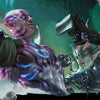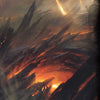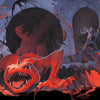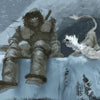12 Lessons Movies Teach Us About Dungeon Mastering
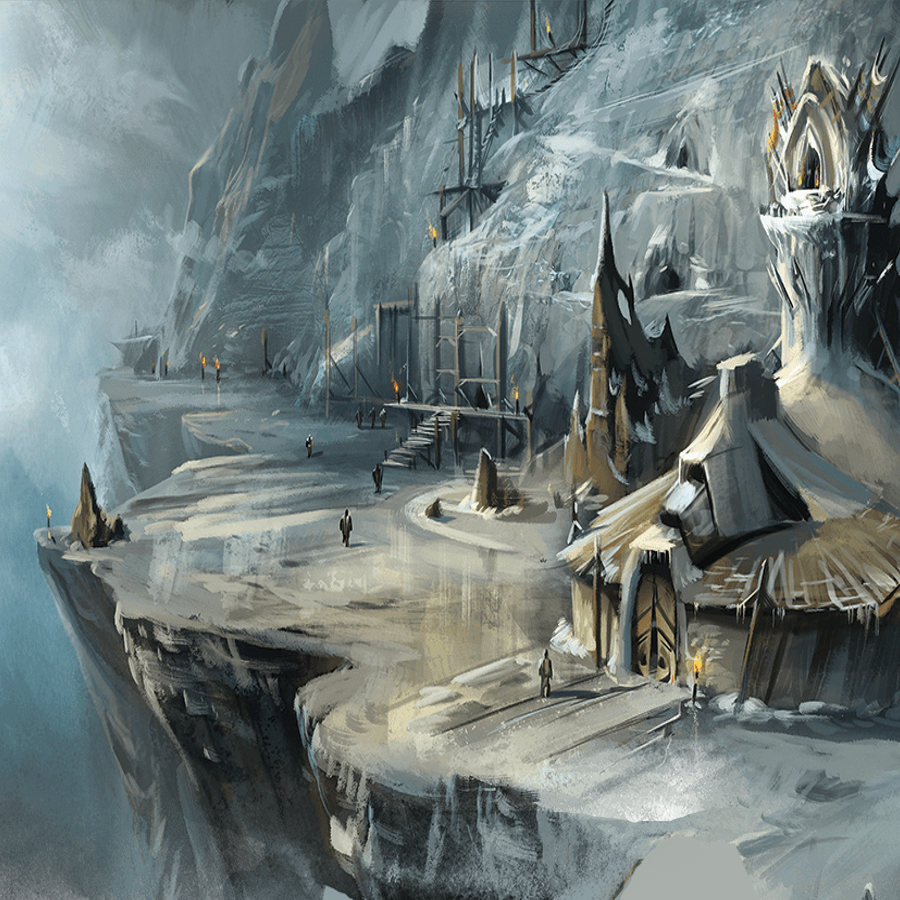
Written by Luke Hart
Everyone loves a good movie; if you don’t, well, you’re probably not everyone. Everyone also loves a good D&D game, and if you don’t, you probably don’t play D&D. OK, you know what? This intro is kind of falling apart. My point here is that just as some movies are amazing, some D&D games are amazing; and just as some movies completely suck, some D&D games completely suck.
And if you’re here, you probably want your D&D games to be just as awesome as your favorite movie. I mean, what dungeon master wouldn’t? And yet, at the same time, what you probably dread is running a crappy D&D game where nothing seems to go right because, after games like those, well, we all feel like losers.
So, the question now is: How can we make our next game session as amazing as The Empire Strikes Back, the Star Wars movie from the original trilogy routinely hailed as the best Star Wars movie ever? And how can we avoid having our game sessions flop like Attack of the Clones, which was an utter disaster?
Actually, for utter disasters, look no further than The Force Awakens, The Last Jedi, or The Rise of Skywalker. Those movies are mostly train wrecks, especially the last one. I know there was a lot of drama and “director wars” going on with those three films, but it felt like the two directors were competing for who could make the worst movie, not the best.
Anyway, I digress. Today, we’ll go over 12 lessons that movies teach us about being a game master. These lessons apply to almost any tabletop role-playing game, whether it’s D&D, Pathfinder 2, Dungeon Crawl Classics, Shadowrun, Shadowdark, Call of Cthulhu, or something else.
Watch or listen to this article by clicking the video below.
#1: Action Over Inaction
The game should always be moving forward. Something important to the plot, the adventure, the character, or whatever should always be unfolding. It doesn’t matter if the characters are in a combat, exploration, or social interaction scene; something that your players care about needs to be happening. Action drives excitement. Furthermore, every subsequent scene of your game should seek to escalate this action and increase the stakes, drama, suspense, and conflict.
For example, the action in The Empire Strikes Back is always escalating. Even the slower, more deliberate scenes, such as Luke’s lessons on Dagobah and Han and Leia’s interlude on the asteroid while repairing the Millennium Falcon, move the story toward more action.
Something is always happening. Luke isn’t just learning; he’s also running, flipping, and dodging through the jungle. Han and Leia discover they’re in the belly of a beast and must escape into greater danger.
On the flip side, most of the action in Attack of the Clones is in Obi-Wan’s investigation, leaving Anakin and Padmé awkwardly filling time with their burgeoning romance but with no significant advancement of the story.
Furthermore, the cuts between Obi-Wan and Anakin only disrupt the pace of the film rather than drive the tension and action. Even the Republic Senate’s debates and decision-making scenes only damage that pacing even further and are meant to explain things to the audience rather than drive the action.
#2: Lean into Conflict
I will shout this from the rooftops for as long as I have breath in my lungs: One of the game master’s primary roles is to create conflict!
Conflict drives drama, drama drives suspense, and suspense drives interest and excitement. Look, if you want to keep your players motivated to play and their characters motivated throughout the adventure, you must have conflict in your game. I mean, without conflict, what are you doing besides putzing around in the game world, talking to shopkeepers, and stealing from innocent street urchins? Not that I’ve ever done that.
In The Empire Strikes Back, the movie quickly gets into the Empire attacking the rebel base. It starts with conflict. Then, the characters are forced to flee and choose to follow their own plot hooks.
Luke heads to Dagobah to train to become a Jedi and protect his friends, but even there, we find conflict. Yoda doubts his dedication and that he is cut out to be a Jedi, and Luke struggles to convince him otherwise.
Leia needs to get back to the Rebel fleet but can’t join the escaping ships, so Han takes her with him, setting his needs aside for his desire to protect her. But it’s not all ice cream and delicious salty strips of mouth-watering bacon, no—the Millennium Falcon’s hyperdrive isn’t working, and Han and Leia must evade and hide from the Empire in the asteroid field. Conflict. Shoot, we even have conflict between Han and Leia as they bicker back and forth over almost everything. That right there is a bit of foreshadowing, but we’ll talk about that in just a moment.
And then we have Attack of the Clones. . .
Anakin has to fight his feelings for Padmé because his duty as a Jedi in training demands it. Still, he pretty much just ignores that conflict and focuses on his feelings over his duty. A little later, he runs off to find his endangered mother, taking Padmé, whom he was charged to guard and protect, with him into danger. There’s no real conflict here, just a backstory for the audience.
Then Obi-Wan follows the bounty hunter to Geonosis and goes on a side adventure, which really makes up the core of the film’s actual story, creating awkward pacing. It moves half the story forward but seems disconnected from the rest of the film. This prolonged investigation does set some things up for future conflict in the film, but its real purpose is just to, again, fill in the backstory for the audience.
These two plot threads remind me of a recap at a game session. You need to know what happened last time because it impacts today’s game session, but do you really want to spend all your time in the recap? No, you spit it out and move on. You don’t dilly-dally on it.
#3: The Three-Act Structure
The three-act structure has existed for centuries, but it was popularized in Syd Field’s 1979 book Screenplay: The Foundations of Screenwriting. This is the essence of the three-act structure that all good movies follow.
At a high level, the three acts are defined as the Setup, the Confrontation, and the Resolution.
Act One: The Setup. Here, we have the inciting incident. This is where the plot hook is revealed, motivating the characters to do the thing. This first plot point is called the Setup; soon thereafter, we arrive at a “pinch point” where conflict and events put pressure on the characters, moving the action to Act Two.
Act Two: The Confrontation. This is where we have the rising action, where conflict and drama unfold as the characters learn more about the situation at hand. Then, there is a turning point or setback that leads the movie plot in a new, unexpected direction. Here, we find that the situation is worsening for the protagonists, not improving. In fact, things often look quite bleak, leading to greater tension and anticipation. This leads us to the biggest obstacle in the story and ushers us into. . .
Act Three: The Resolution. The rising tension peaks into the climax, which ties up any loose ends in the story and builds to a final confrontation between protagonist and antagonist. In The Empire Strikes Back, this is Luke dueling Darth Vader. Finally, there is the outcome or wrap-up, where the aftermath is shown, and the film finishes.
Now, I won’t break down each film because that would take a lot of time. However, suffice it to say that The Empire Strikes Back is an excellent example of a three-act structure with clear transition points. Meanwhile, Attack of the Clones is a lot muddier, and it’s harder to see the motion of the plot throughout the film’s structure. In fact, when I watch Attack of the Clones, it often seems like there are two three-act structures in the film, so I’m watching two movies jammed into one. It just feels disjointed and has poor pacing and structure. I don’t know how else to put it.
#4: Foreshadowing
We all know what foreshadowing is, but do you know who foreshadowing is for?
Earlier, when I mentioned Han and Leia’s bickering as an example of foreshadowing, well, it was, but it isn’t the type of foreshadowing you necessarily want to include in your games. You see, their bickering was foreshadowing to the audience that they would eventually get together. But when you incorporate foreshadowing into your games, you want to foreshadow for the characters, not your players.
In The Empire Strikes Back, Luke’s experience in the Dark Side cave on Dagobah foreshadows his later failure against Vader and the revelation that Vader is his father. Han’s mention of the “bounty hunter of Ord Mantell” to Leia foreshadows his eventual capture and handover to Boba Fett. Note that the foreshadowing is for the characters in the film, not necessarily for us, the audience, even though we are likely to pick up on it.
Then, in Attack of the Clones, most of the foreshadowing takes place in the Senate, away from the characters. That’s foreshadowing for the audience. Or the foreshadowing is the discovery of one character, but it foreshadows danger to another remote character and has to be relayed to them, or, worse, they don’t find out about it until it’s too late.
You may also note in that film that the majority of the foreshadowing isn’t focused on the adventure at hand but on the original Star Wars trilogy: the Death Star schematics, Boba Fett picking up his dead father’s helmet, the introduction of Anakin’s half-brother Owen. All that foreshadowing is not for the characters; it’s for the audience. It’s a way for the film to say, “Look here; this is how all that came to be. Aren’t we clever?” At the end of the day, this sort of foreshadowing may serve the audience, but it doesn’t serve the story.
#5: The Twist
Much like a movie, any good adventure includes a twist that turns the narrative on its head. This might also include a grand revelation where the characters and audience discover something critical and dramatic that was previously unknown.
In The Empire Strikes Back, Luke encounters this goofy little green guy on Dagobah, who seems merely to frustrate him. However, that green guy turns out to be Yoda, a Jedi Master. Luke learns that being a Jedi isn’t about being a great warrior but a spiritual being. Then we have a twist upon a twist. At first, Lando is helping Han and Leia escape the Empire, but then he betrays them to Vader. He then betrays Vader and helps Han and Leia escape.
“No. . . I am your father.” Do I need to say anything more? This is arguably the best twist in the history of science fiction. It’s so good that it’s been overused since by copycat after copycat. And it is, of course, the grand revelation of the film as well.
Moving to Attack of the Clones. First, a secret army of clones is being built for the Republic . . . I mean, the word “clones” is in the title, so, um, great twist, yeah. The Separatists are being led by a fallen Jedi that we’ve never heard of until this adventure, so a huge opportunity for a cool twist was completely missed. Oh, and then Count Dooku has been working on the designs for the Death Star, but the heroes don’t learn about this . . . ever. Another missed opportunity.
In fact, I’m not sure the film has any real twists. It’s just exposition, backstory, really, to tell the audience how the first trilogy—the good trilogy—came to be. Ask any player or game master, and they’ll tell you that a backstory is a backstory for a reason: you do not want to play the backstory part of the game; you want to play what happens after.
#6: The Setback
Every good story has a setback, a point of failure for the protagonist, where their plans seem to unravel, and their goal gets further away, not closer. The power of a setback is that it plays on the audience’s heartstrings, their desire to see the protagonist win, and yet it seems like they might not. This increases their engagement, amplifies the tension to untold heights, and keeps them glued to their seats.
In The Empire Strikes Back, one might argue that the entire movie is setback after setback. At the end of the film that preceded it, A New Hope, the Rebellion had just destroyed the Death Star, and it seemed like the Empire might be through. However, The Empire Strikes Back begins with the Empire destroying the hidden rebel base on Hoth. Then, the bounty hunter captures Han Solo, frozen in carbonite. Then Luke battles Vader, loses his hand, loses the battle, and nearly dies.
The film is a story of setback after setback, with the Empire winning and the Rebellion losing. Quite frankly, I think that is half the genius of the movie. The audience is invested in these characters, and yet everything seems to be going wrong. What the heck is happening? Is this the end of the Rebellion? Has the Empire won? And that sets the trilogy up for a masterful third installment in Return of the Jedi.
The truth is the first three movies of the original trilogy follow the three-act structure. A New Hope is Act I, The Empire Strikes Back is Act 2, and Return of the Jedi is Act 3. And that, again, reinforces our lesson about the power of the three-act structure.
If only some directors had studied this before driving a beloved franchise into the ground. Yes, I’m looking at you, Rian Johnson and J.J. Abrams. I mean, why you gotta do us like that?
#7: The Final Showdown and the Set Piece
The final showdown is likely self-explanatory. This is when the protagonist and antagonist clash during the climax of the story. And the set piece is almost always part of that showdown; it’s the action-packed extended scene that often features a unique location or backdrop.
In The Empire Strikes Back, this is obviously the final battle between Luke Skywalker and Darth Vader. Not only do they have an extended battle—the final showdown—but it transitions from one dynamic and interesting location to another as they battle across the interior of Cloud City—this forms the set piece.
As for Attack of the Clones, well, there is a final showdown and set piece as Anakin and Padmé fight for their lives in the arena, but ultimately, they are rescued by the other Jedis and the clone army. So, arguably, you have a decent setup, but it is ruined by a Deux Ex Machina moment.
#8: Show, Don’t Tell
How can I put this this gently? Um, stop lore-dumping! Don’t dump lore on the characters that isn’t relevant to the adventure or campaign; instead, reveal the necessary lore through the action rather than monologue.
In The Empire Strikes Back, Yoda doesn’t tell Luke about the danger of falling to the Dark Side of the Force or his similarities to Darth Vader’s fall from grace; he is shown these by the Dark Side cave under the tree.
Yes, Han does a lot of “telling,” such as explaining who Lando Calrissian is; however, his discussions and arguments with Leia are the course of this telling, which continues to keep the lore dumps interesting and always leads to greater action.
Then we have Attack of the Clones. Well, Anakin fights an entire village of sand people to get revenge for his dead mother and kills all of them, but we don’t see it. He tells Padmé about it after the fact.
The Senators, well, they talk a lot. I guess we can’t do much about that, can we? They’re politicians, and talking is what politicians generally do, right? Now it’s time to steer away from that topic before everyone tries to kill each other in the comments because a mature discussion on politics isn’t usually possible these days. Crap. There I go again.
Finally, Obi-Wan doesn’t actually learn about what’s happening with the Clone Army through investigation and action. Instead, he arrives on Kamino, where he is welcomed by the clone creators and given a dialogue-heavy tour of the facility. Quite literally, lots of telling, lots of talky-talky.
#9: Character Goals and Motivation
The best plot hooks in a story focus on the characters’ goals and desires. If the characters are motivated to do something, you can bet your next paycheck they’ll do it, and the best way to motivate them is to play on with what they want to do, to begin with.
In The Empire Strikes Back, Luke wants to protect his friends and become a Jedi Knight like his father. Leia wants to defeat the Empire and bring Freedom and Democracy back to the Galaxy. Han wants to pay off his debts but is also torn by his loyalty to his friends and growing feelings for Leia.
And what do we then see? They all receive their own hooks based on their own desires: Obi-wan tells Luke about Yoda, Han stays one more day to rescue Luke, and Leia learns of an Imperial Probe Droid.
In Attack of the Clones, Anakin is torn between his duty and his affection for Padmé. Then Obi-Wan’s motivations are jumbled: he wants to protect the Republic, be a good Jedi, be a good Master, and keep control of Anakin. However, none of these motivations are clearly defined.
As for the hooks the characters receive, Anakin is assigned to protect Padmé after an assassination attempt, undermining his inner conflict but trying to set up a deeper focus on that conflict, even though this never pays off in the film. Obi-Wan is given a side quest to track down the would-be assassin, which splits his motivations as well and separates him from his primary focus: Anakin.
You see, both of these hooks tell the characters what to do instead of inspiring them to pursue the adventure of their own accord.
#10: The Characters Are the Story
Listen, the characters are the stars; they should drive the adventure forward and remain the focus of the story. I know that as a game master, you may have some ideas in your head about what should happen, but the characters’ decisions should drive the story forward, not what you want.
In The Empire Strikes Back, every success or failure is the result of the characters’ actions, and the cut scenes that focus on the villains don’t move the adventure forward; instead, they just foreshadow the coming conflicts.
However, in Attack of the Clones, we find that the characters are not in control at all; their actions don’t really matter. Luke and Padmé get rescued on Geonosis by a massive army of Jedi and faceless NPCs instead of figuring out a solution themselves. Then the scenes with the Senators move the story forward, such as giving Palpatine executive powers, without involving any of the central characters.
You see, the characters are quite literally helpless in the film and at the whim of some all-powerful overload—the director—who has decided what will happen, regardless of what the protagonists actually do. And this is the very definition of a railroad—when character decisions and actions don’t matter, and the game master has already decided how things are going to turn out.
#11: Use the World and Environment
The lesson here is to incorporate the setting, world, and environment into the narrative organically; don’t force it.
For The Empire Strikes Back, Hoth is cold, and Luke and Han are in danger of freezing to death. Dagobah is hot and humid: Luke is always sweating, and his X-wing sinks into a bog. Cloud City is glamorous, but it’s also hovering above a gas-giant planet, and Luke ends up hanging off an antenna array in imminent danger of falling into it.
Han tells Luke he looks “strong enough to pull the ears off a Gundark,” and nobody thinks twice about it . . . and it isn’t explained to the audience. We just accept it because it’s part of the world, and we know what it means, even if we don’t know what a Gundark is. I mean, I still don’t know what a Gundark is, and I LOVE Star Wars.
Then we look at Attack of the Clones. Tatooine is a desert orbiting a binary star; it should be hot, but the heat never comes into play. OK . . . by the time the movie leaves Geonosis, we have no idea what the climate of that planet is; it’s just flat and brown. Nice. Also, the storms on the water world of Kamino are actually really well done. Wow! Look at that! There’s something positive from Attack from the Clones. And it only took us how long to find something?
But then a random guy tries to sell Obi-Wan “death sticks,” and Obi-Wan uses the force to tell him to go home and re-think his life. So there is an attempt at some world-building, but ultimately, it’s a throwaway line that does little to build the world or advance the plot.
#12: Recurring NPCs
Give your players someone to love or hate with people in the world—NPCs they’ll run into again and again.
In The Empire Strikes Back, the stormtroopers serve as an NPC that fills this role. There always seem to be more of them, and wow, do the protagonists hate these guys, even though they have the worst aim in the galaxy. OK, that’s a bit of a jab, but have you ever noticed that stormtroopers can never hit what they’re aiming for? Maybe it’s because they are firing a rifle from the hip? Have they ever thought about lifting it up to align with their eyes? Or maybe it’s their helmets?
As for Attack of the Clones . . . You know what? I think we’re done ragging on that movie for today. I mean, enough is enough, right?
The Definitive 5e GM Resource Anthology
Lairs & Legends 2 and Loot & Lore 2 are the ultimate game master resource! These two massive books put an anthology of everything you need to run amazing games for YEARS at your fingertips.
- Over 30 Adventures
- 30 Stand-Alone Encounters
- More than 100 Monsters
- Traps and Puzzles
- 6 New Rule Sets
- And much more!
These books are written to make running the game easy for new and veteran GMs. Each resource is built with intuitive formatting, clear wording, and evocative art. You’ll never again have to dig through dense paragraphs to find critical details you need during a live session.
These 5e resources are designed to scale to your needs, whether it’s a quick drag-and-drop trap to add some spice to your session or complete adventures that span levels 1 to 20. The sky’s the limit with what your games can become with Lairs & Legends 2 and Loot & Lore 2.
-
Posted in
Game Master How-To Articles


